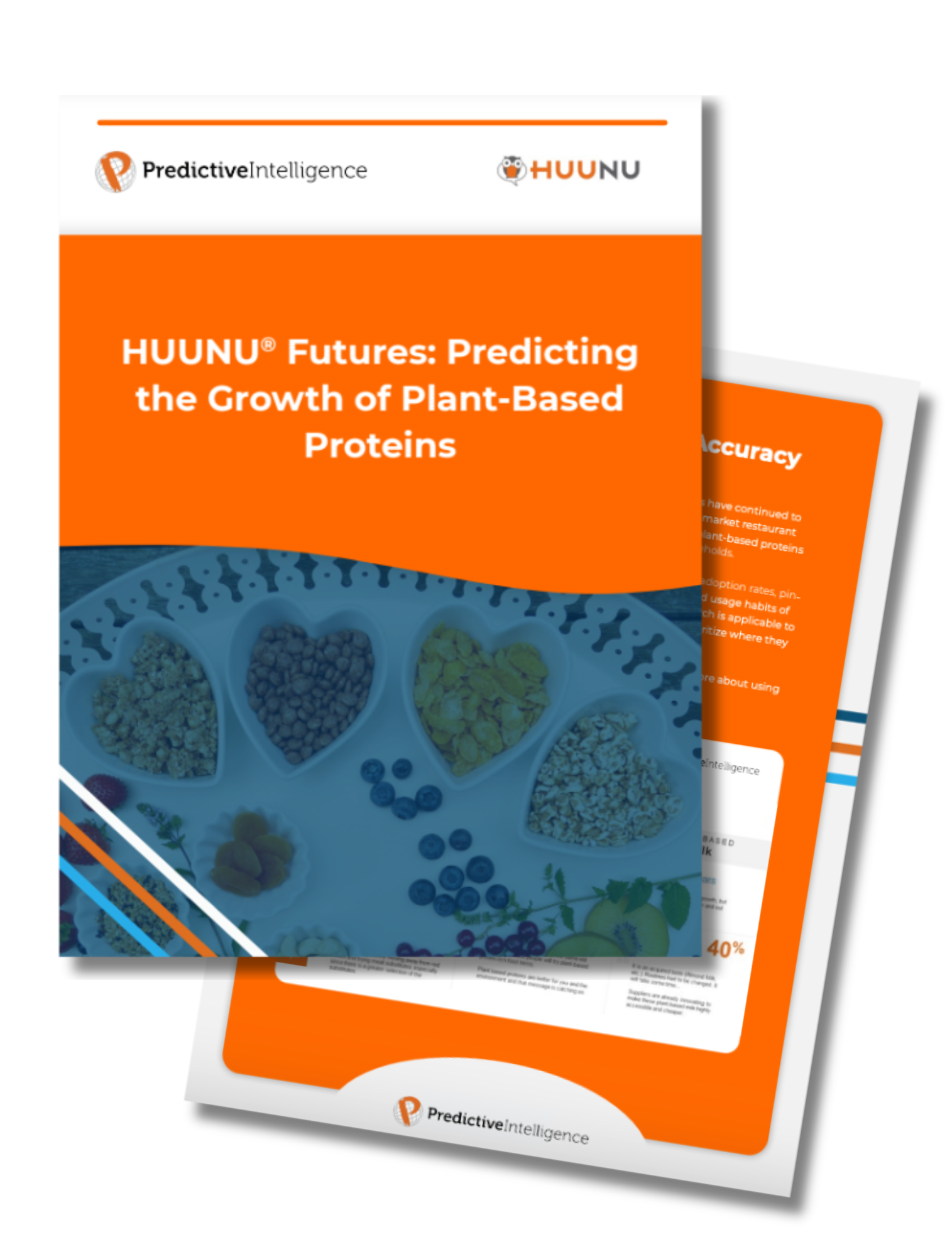3 real-world examples of concept testing
CRG Predictive Intelligence applies an industry-leading prediction market methodology to the concept testing process, helping companies measure metrics like “purchase likelihood”, ”relevance”, “advantage”, “solves a problem” and “job-to-be-done”. Combined with qualitative rationale, the result is a crystal-clear picture of the likely success of the concept under testing, including valuable feedback on how it might be refined or improved.
Here’s how three CRG Predictive Intelligence customers tested their concepts using the HUUNU platform:
Concept testing example 1: New product innovation viability for an allergy/cold medication manufacturer
As previously noted, prediction markets have been proven to identify disruptive or breakthrough concept potential much better than traditional survey methodologies. Simply put, truly disruptive ideas are easily missed using traditional survey techniques because the idea may be considered too high risk or the appeal may not hit certain thresholds for success if it was intentionally developed for a niche audience.
One CRG client, a cold and allergy medicine manufacturer, used CRG’s prediction market methodology to test new product forms and flavors for viability, while managing to surface breakthrough ideas, successfully identifying numerous truly disruptive product concepts that went on to achieve significant in-market success.
Concept testing example 2: High-risk/non-starter use case for a top health and beauty brand
A health and beauty brand approached CRG after traditional survey methods reported a new acne product to be high-risk. The brand felt there was merit to the idea and wanted to be absolutely sure it was a non-starter before pulling it from development. They wanted to give it a fair shot by testing the concept using CRG’s alternative methodology.
CRG tested the product among the target audience it was designed for, and results showed it was worthy of greater consideration – it was neither high-risk nor a non-starter. Upon launch, it became a number one-selling acne treatment product on the market and won Allure Magazine’s Best Beauty Award – neither of which would have happened without CRG’s prediction market concept testing approach.
Concept testing example 3: Frozen novelty testing for a popular ice cream brand
A popular ice cream band was looking to expand its product offering to include new frozen novelty forms. There were seven concepts on the table, and the objective was to use concept testing to understand each variant’s likelihood of success quantitatively while understanding the key themes associated with each concept for consumers at a qualitative level. CRG’s concept testing revealed that one concept clearly outperformed the others on each of the key measures, so this concept was prioritized for full development.
Expertly test concepts and early-stage ideas with CRG
For the last decade, CRG has been helping companies optimize their development processes with industry-leading insights, delivered via the cutting-edge HUUNU platform. In the HUUNU prediction market methodology, participants are challenged to participate in a betting game, where they bet virtual currency on how they believe a concept will perform among a certain target market. How much and how quickly they bet gives companies deep insights into the emotive response, tacit knowledge, and collective judgment of the market participants. Each quantitative bet is backed up by a qualitative rationale at no additional cost, delivering important insights into what drives and motivates the target audience.
With HUUNU, brands can gain access to the following concept testing deliverables:
-
Prediction Likelihood Index: A summary overall prediction score on key success metrics, reported on a 0-100% certainty scale (e.g.: new mothers are 89% likely to buy this product, etc.).
-
Preference Prediction: A metric showing the proportion of participants betting for and against each outcome in the prediction market betting game.
-
Strength Meter: A summary of the intensity of positive or negative betting activity on each outcome or answer.
-
Verbatim Explorer: A pivot table that provides detailed qualitative rationale on all positive or negative predictions, with a summary of highlights from all feedback.
The result? An unprecedented strategic advantage and accurate decision-making at every stage of the development lifecycle.
Learn more about CRG’s Advanced Concept Testing solution today.

.jpg)





